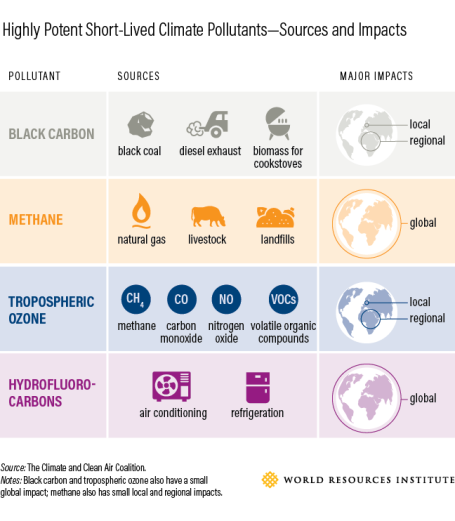Highly Potent Short-Lived Climate Pollutants-Sources and Impacts

Despite their esoteric name, short-lived climate pollutants matter to all of us. They're a consequence of how we produce energy, grow food, drive and cool ourselves.
Methane is perhaps the best-known SLCP, emitted as a result of oil and gas production, as well as by rice production, livestock and during the decay of organic waste in landfills and water treatment facilities. Tropospheric ozone forms as a byproduct of other air pollutants, including methane. Burning biomass for cookstoves or burning coal for electricity and household heating can produce black carbon. HFCs are a product of air conditioning and refrigeration systems, both of which are on the rise as temperatures and incomes around the world go up.
While SLCPs are often emitted from food production and everyday household practices, they can also be harmful. For example, tropospheric ozone is a health hazard and reduces crop yields, while black carbon increases the risk of heart and lung disease. At a global level, experts estimate that reducing SLCPs can prevent as much as 52 million metric tons of crop losses per year, and avoid an estimated 2.4 million premature deaths from outdoor air pollution annually by 2030.
Reducing SLCPs can therefore provide many sustainable development benefits, including poverty reduction, food security, improved health, clean energy, gender equality and more sustainable cities. However, governments should be careful to implement policies that respect and respond to community needs. For example, to reduce black carbon emissions from cooking and heating, cleaner fuels must first be readily available and affordable. However, solutions must factor in the cultural sensitivities and nuances associated with cooking in particular places and cultures in order to deliver equitable benefits to people—particularly opportunities for women and girls.